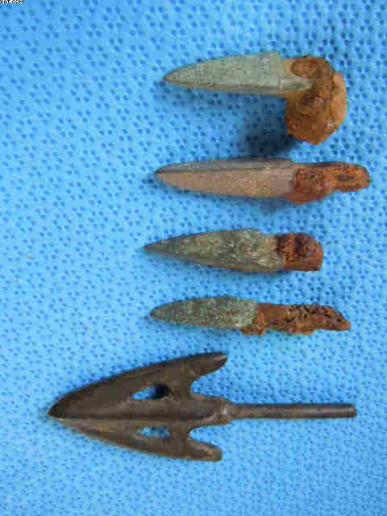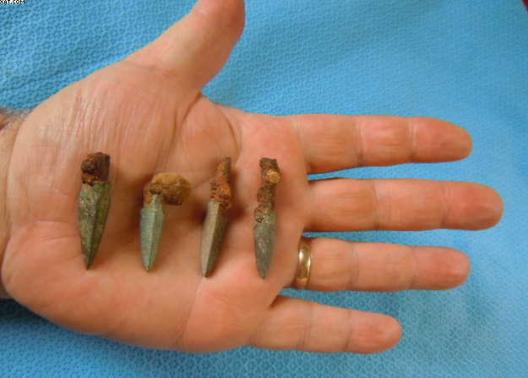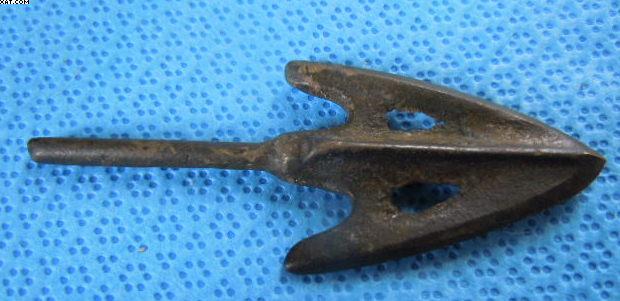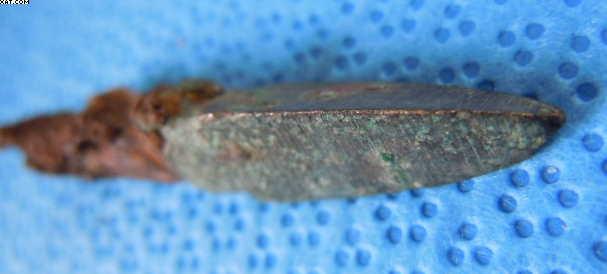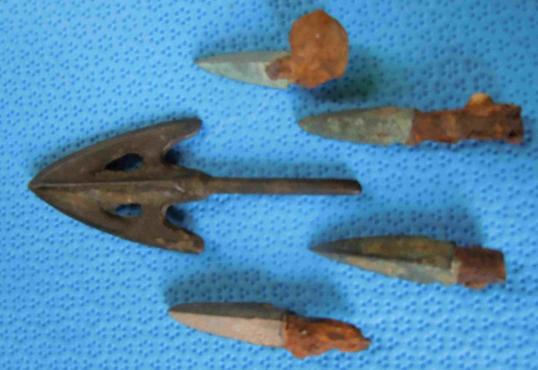Qing Dynasty Chinese Bronze arrowheads, Bow and Crossbow.
Here we have a small collection of bronze arrowheads I acquired on a trip to China. The smaller arrowheads date from the latter part period of the warring states period 476 to 221 BC. The Art of War attributed to Sun Tsu was written in this period. The larger arrowhead is a little later and is representative of the Qing dynasty. Qin Shihuang (259210 BC) is one of the most famous and controversial figures in Chinese history. Widely known as 'the First Emperor', he forcibly unified China for the first time, prosecuted intellectuals and opponents, abolished feudalism, and standardised philosophy, script, coinage and law. The enormous mausoleum complex he commissioned for himself in Xi'an, Shaanxi, remains an unequalled material representation of his world, providing an almost inexhaustible source of information about the powerful political and symbolic system that was built up around his personality. This mausoleum houses the Terracotta Army which was built at the end of the Warring States period. Archery was fundamental to the development of warfare at this time and although the chariot remained a major factor in Chinese warfare long after it went out of fashion in the Middle East. Near the beginning of the Warring States period there is a shift from chariots to massed infantry, possibly associated with the invention of the crossbow. This had two major effects. First it led the dukes to weaken their chariot-riding nobility so they could get direct access to the peasantry who could be drafted as infantry. This change was associated with the shift from aristocratic to bureaucratic government. Second, it led to a massive increase in the scale of warfare. When the Zhou overthrew the Shang at the Battle of Muye they used 45,000 troops and 300 chariots. For the Warring States period the following figures for the military strengths of various states are reported:
Qin: 1,000,000 infantry, 1,000 chariots, 10,000 horses;
Chu: same numbers;
Wei: 200360,000 infantry, 200,000 spearmen, 100,000 servants, 600 chariots, 5,000 cavalry;
Han: 300,000 total;
Qi: several hundred thousand;
For major battles, the following figures are reported:
Battle of Maling: 100,000 killed;
Battle of Yique: 240,000 killed;
General Bai Qi is said to have been responsible for 890,000 enemy deaths over his career.
Many scholars think these numbers are exaggerated (records are inadequate, they are much larger than those from similar societies, soldiers were paid by the number of enemies they killed and the Han dynasty had an interest in exaggerating the bloodiness of the age before China was unified). Regardless of exaggeration, it seems clear that warfare had become excessive during this period. The bloodshed and misery of the Warring States period goes a long way in explaining China's traditional preference for a united throne.
These particular arrowheads were acquired in Hubei province and carry a lifetime guarantee of authenticity. There are many fake artefacts manufactured in China and export of genuine artefacts is becoming difficult. All of these arrowheads are contemporary and would pass a Carbon 14 test in respect of age.
An interesting collection of artefacts from the period that founded a unified China.
Code: 50355


